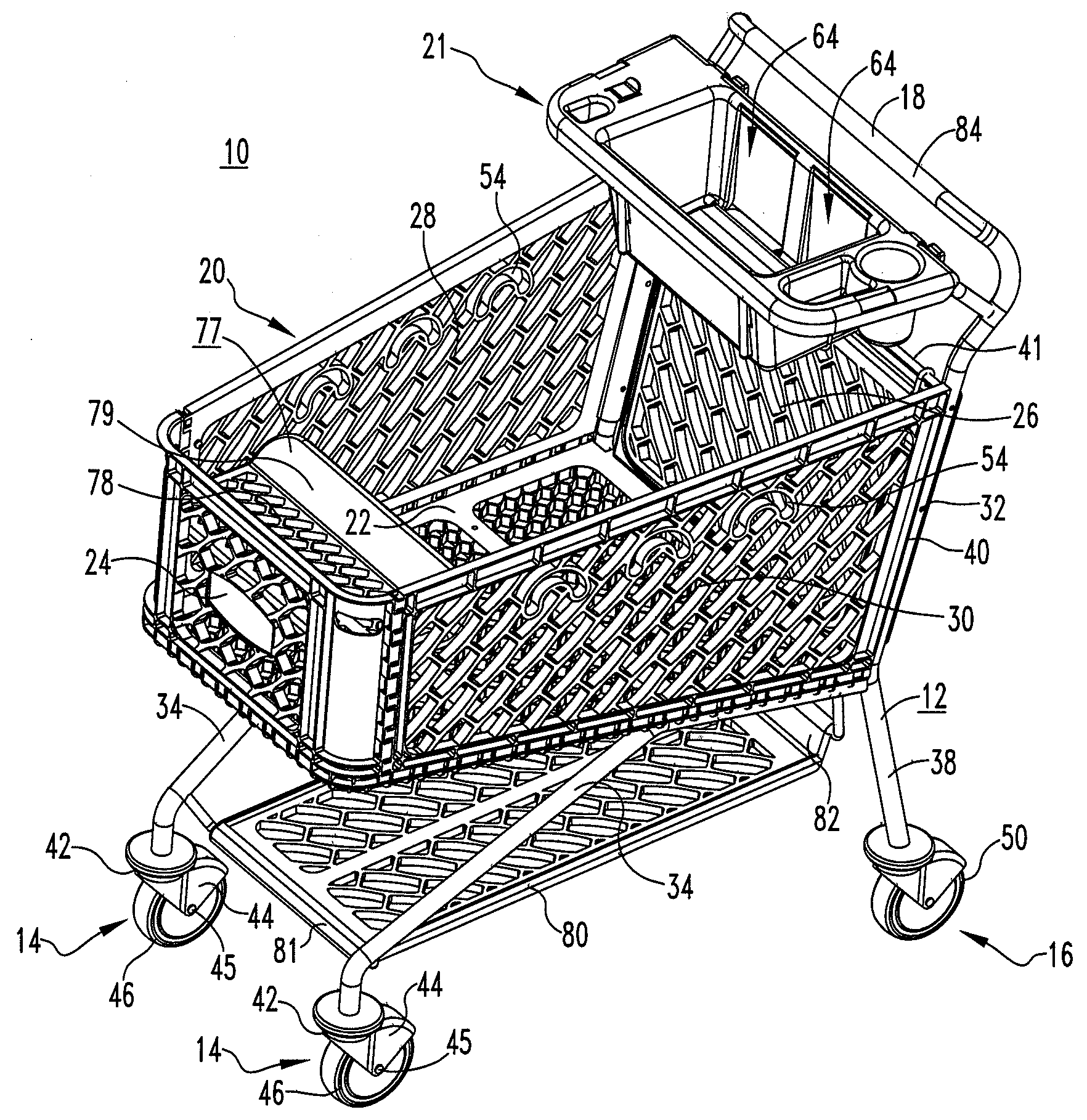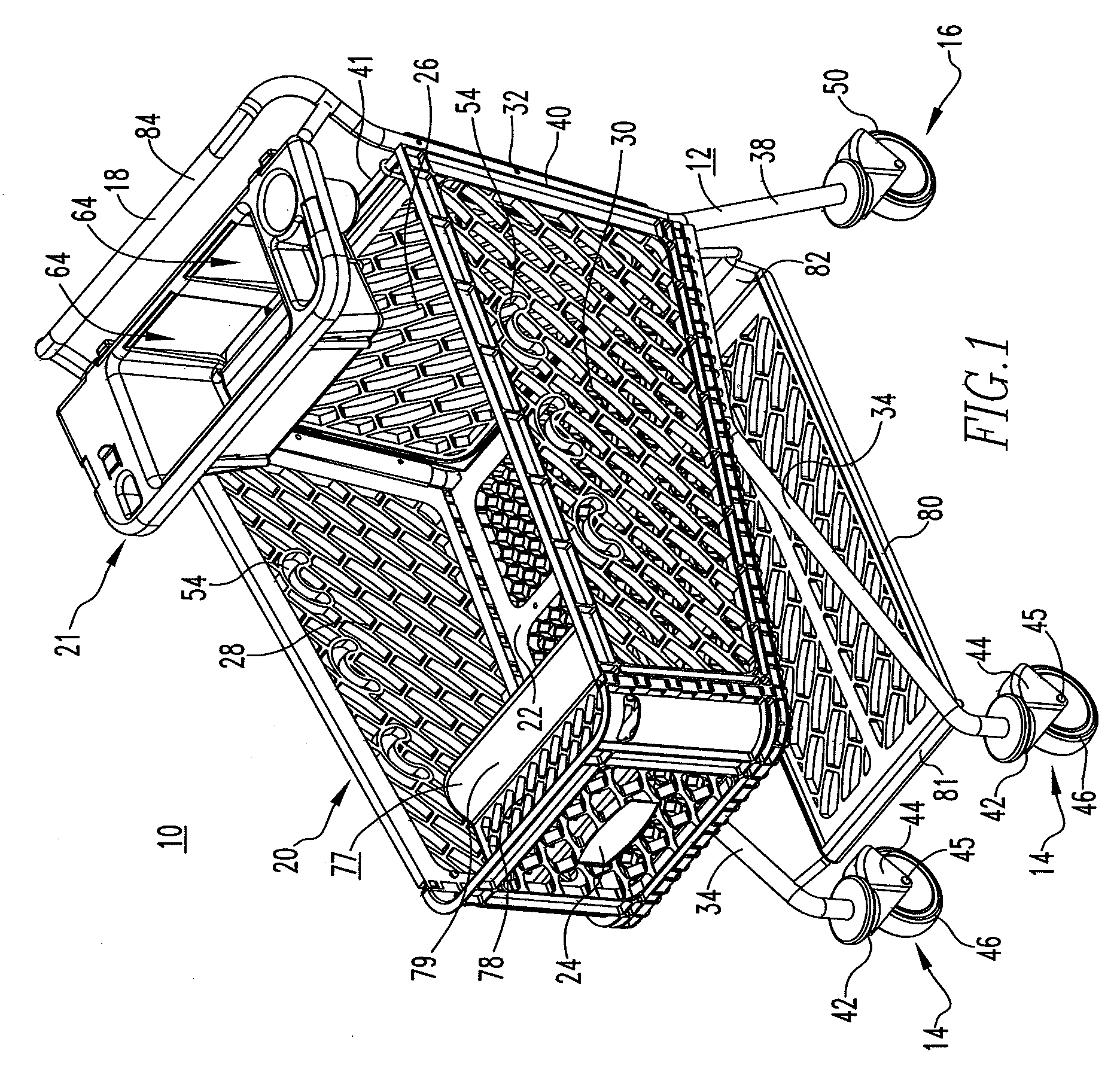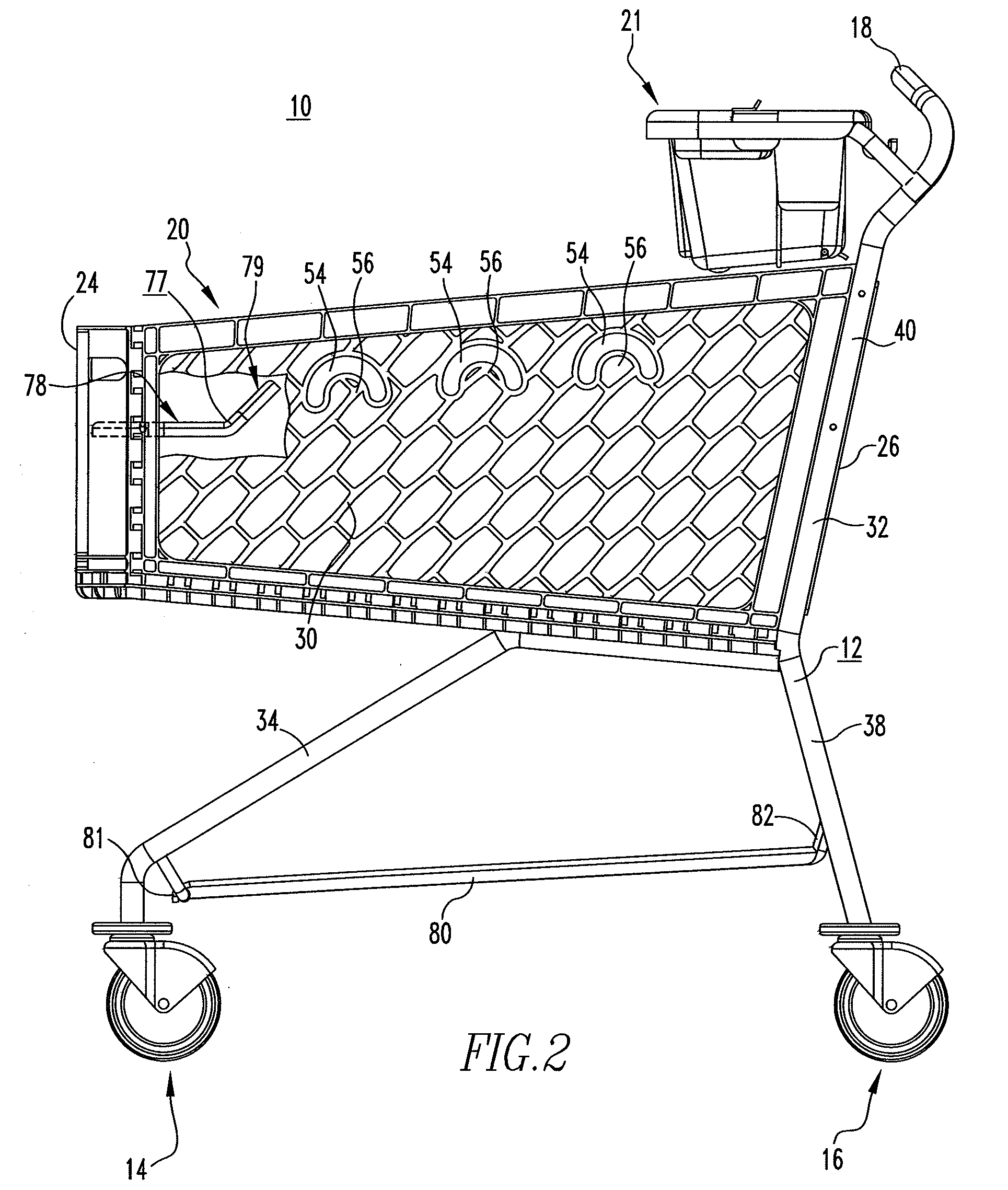Shopping Cart
a cart and cart body technology, applied in the field of shopping carts, can solve the problems of increased production costs, high stress on the rear casters and wheels, and less desirable traditional designs
- Summary
- Abstract
- Description
- Claims
- Application Information
AI Technical Summary
Benefits of technology
Problems solved by technology
Method used
Image
Examples
Embodiment Construction
[0028]For purposes of the description hereinafter, the terms “upper”, “lower”, “vertical”, “horizontal”, “axial”, “top”, “bottom”, “aft”, “behind”, and derivatives thereof shall relate to the invention as it is oriented in the drawing FIGS. or as it is oriented when resting upright on a flat horizontal surface. However, it is to be understood that the shopping cart may assume various alternative configurations when the invention is moved about or the shopping cart is resting in a non-upright position. It is also to be understood that the specific elements illustrated in the FIGS. and described in the following specification are simply example embodiments of the invention. Therefore, specific dimensions, orientations and other physical characteristics related to the embodiments disclosed herein are not to be considered limiting.
[0029]As employed herein, the term “number” shall mean one or an integer greater than one (i.e., a plurality). As employed herein, the statement that two or m...
PUM
 Login to View More
Login to View More Abstract
Description
Claims
Application Information
 Login to View More
Login to View More - R&D
- Intellectual Property
- Life Sciences
- Materials
- Tech Scout
- Unparalleled Data Quality
- Higher Quality Content
- 60% Fewer Hallucinations
Browse by: Latest US Patents, China's latest patents, Technical Efficacy Thesaurus, Application Domain, Technology Topic, Popular Technical Reports.
© 2025 PatSnap. All rights reserved.Legal|Privacy policy|Modern Slavery Act Transparency Statement|Sitemap|About US| Contact US: help@patsnap.com



